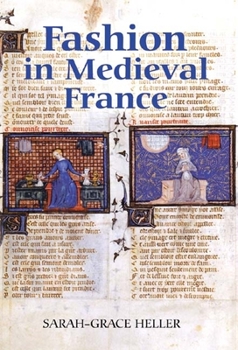Fashion in Medieval France
(Part of the Gallica Series)
How to distinguish between a culture organized around fashion, and one where the desire for novel adornment is latent, intermittent, or prohibited? Up to now there has been a need for a comprehensive working theory of how fashion systems organize social hierarchies, individual psychology, creativity, and production. Medieval French culture offers a case study of "systematic fashion", demonstrating desire for novelty, rejection of the old in favor of the new, and criticism of outrageous display. Texts from the twelfth and thirteenth centuries describe how cleverly cut garments or unique possessions make a character distinctive, and even offer advice on how to look attractive on a budget and spin fantasies of gaining enough spending money shop for oneself. Such descriptions suggest fashion's presence, yet accepted notions date the birth of Western fashion to the mid-fourteenth century revolution in men's clothing styles. A fashion system must have been present prior to this 'revolution' in styles to facilitate such changes, and abundant evidence for the existence of such a system is cogently set out in this study. Ultimately, fashion is a conceptual system expressed by words evaluating a style's ephemeral worth, and changes in visual details are symptomatic, rather than determinative. SARAH-GRACE HELLER lectures in Medieval French at Ohio State University.
Format:Hardcover
Language:English
ISBN:184384110X
ISBN13:9781843841104
Release Date:April 2007
Publisher:Boydell & Brewer
Length:216 Pages
Weight:1.10 lbs.
Dimensions:0.8" x 6.5" x 9.5"
Customer Reviews
0 rating





